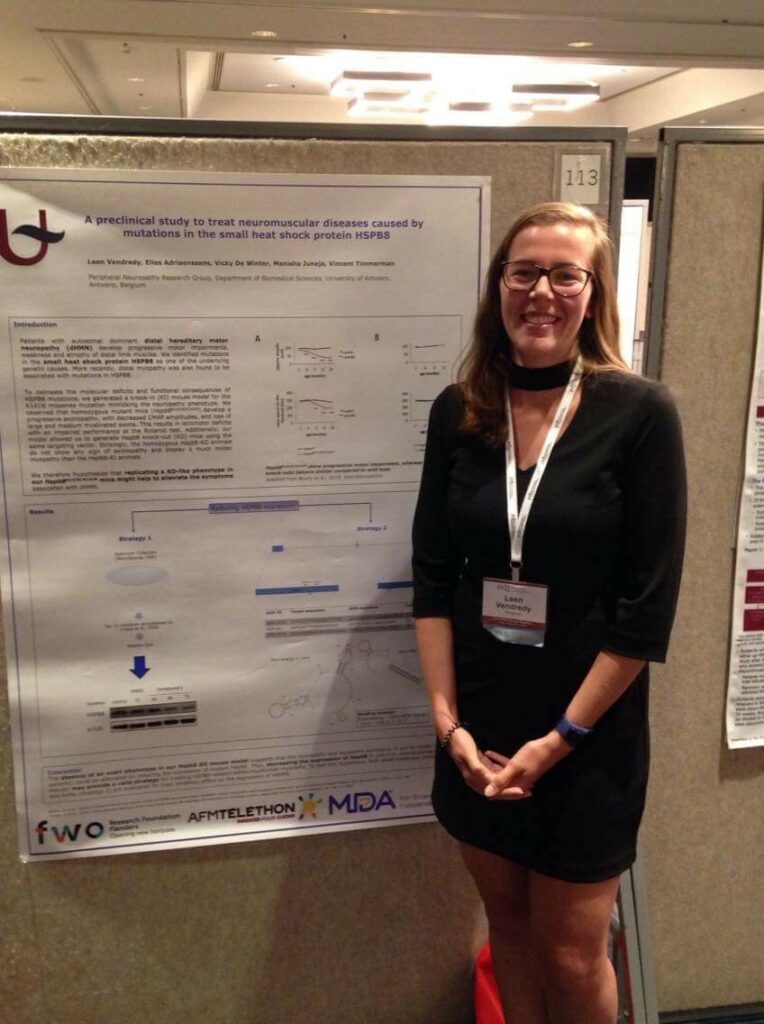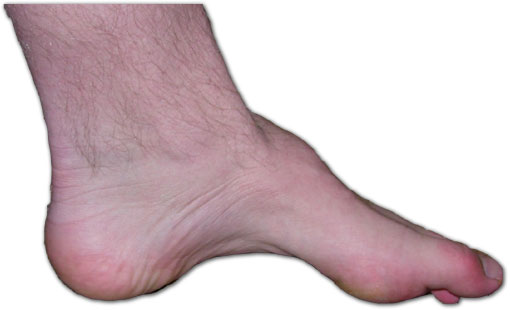
My name is Dr. Leen Vendredy and I recently obtained my PhD in Biotechnology and Biochemistry, having spent the past five years researching neuromuscular diseases caused by mutations in the small heat shock protein HSPB8. My goal was to better understand the underlying mechanisms of these diseases and to identify potential therapeutic approaches. My PhD supervisor was Prof. Vincent Timmerman from the Peripheral Neuropathies group.
Proteins are the major workhorses of every cell, and although many are produced in the correct shape and size, some may have small mistakes due to a variety of reasons. To minimize the damage caused by these aberrant protein products, cells are equipped with protein quality control factors, such as heat shock proteins. Our lab is particularly interested in the small heat shock proteins, often referred to as the first responders to protein misfolding.


Dr. Leen Vendredy presenting a poster and working in the Peripheral Neuropathies lab.
In 2004, our lab discovered that mutations in the small heat shock proteins Hsp27 (HSPB1) and Hsp22 (HSPB8) cause Charcot-Marie-Tooth (CMT) disease, the most common inherited disorder affecting the peripheral nerves. The disease is named after those who classically described it: the Frenchman Jean-Martin Charcot (1825–1893), his pupil Pierre Marie (1853–1940), and the Briton Howard Henry Tooth (1856–1925). CMT is a clinically diverse and genetically heterogeneous disease, with over 100 known genetic causes. Patients typically experience progressive motor impairment, weakness, and atrophy of distal limb muscles, suggesting a length-dependent neurodegeneration affecting primarily the longest motor nerves. To date, there are no treatments available to prevent or cure this disease.

The foot of a person with Charcot-Marie-Tooth disease. (Source: en.wikipedia)
To better understand how mutant HSPB8 leads to a peripheral neuropathy, our lab developed a mouse model for the K141N mutant, which resides in the conserved α-crystallin domain and targets the hotspot residue lysine 141. While the HSPB8_K141N mice mimic the human disease, mice lacking HSPB8 were similar to control animals. This led us to hypothesize that reducing HSPB8 levels could alleviate the symptoms observed in our HSPB8_K141N animals.
To test this hypothesis, we made use of RNA interference (RNAi), a natural biological process that regulates gene expression by “interfering” with messenger RNA (mRNA). By designing sequences that specifically target HSPB8 mRNA, we were able to reduce HSPB8 expression in multiple human and mouse cell lines. We then selected two of these sequences for further evaluation in the HSPB8_K141N mouse model. Our preliminary results for RNAi-mediated silencing of HSPB8 were promising, forming the basis for follow-up studies to fully exploit its therapeutic potential.
In addition, our lab found that frameshift mutations in HSPB8 are causative of myopathies, diseases in which the skeletal muscles are primarily affected. Although these mutations are predicted to result in an elongated protein product that is aggregation prone, the underlying mechanisms remained unknown. We demonstrated that these mutants tend to form cytoplasmic inclusions and sequester other protein quality control factors, leading to a general collapse of the protein homeostasis network, especially affecting those mechanisms in which HSPB8 is involved. Further studies are required to explain the specific vulnerability of muscle cells and to open up avenues for future therapeutic development.
After completing her PhD at the University of Antwerp, Dr. Leen Vendredy joined Sanofi as an MSAT Downstream Process Engineer.
The published research article on this work is available here.
Article written by Dr. Leen Vendredy. Edited by Dr. Bronwen Martin.
